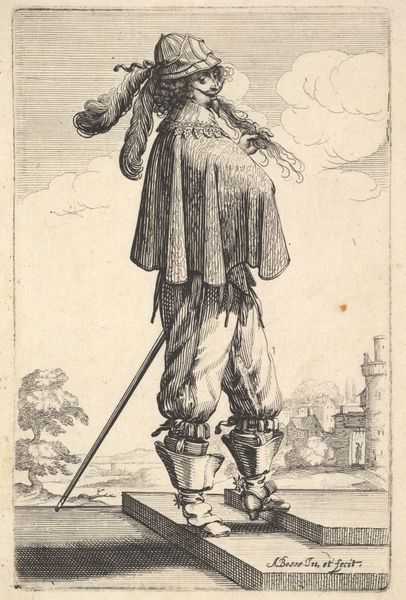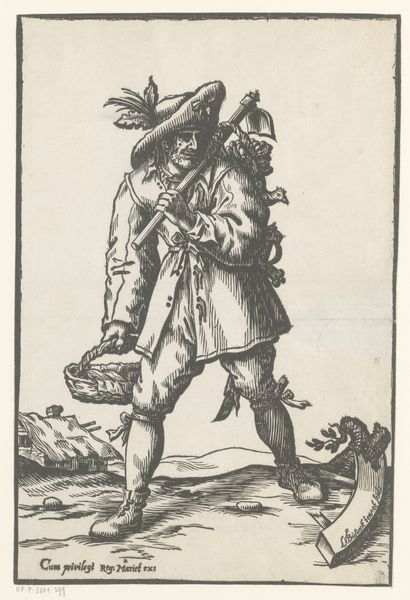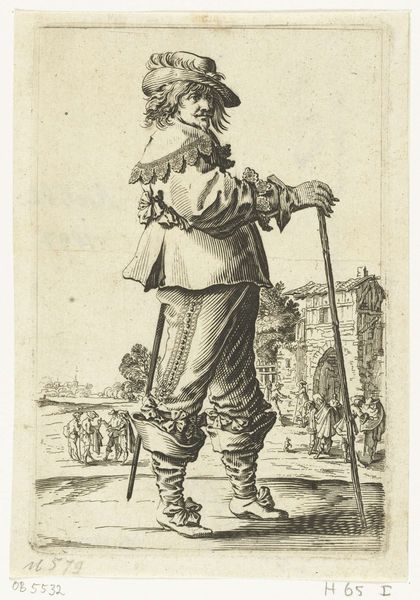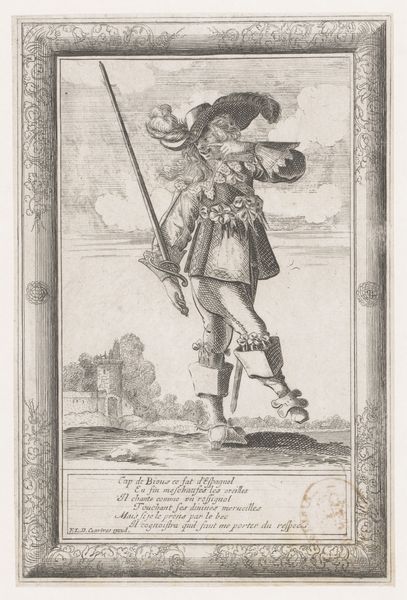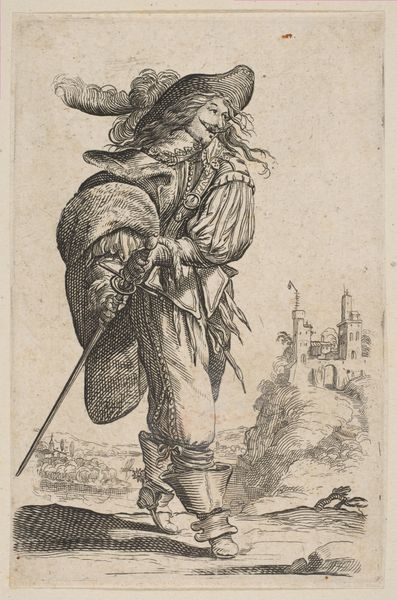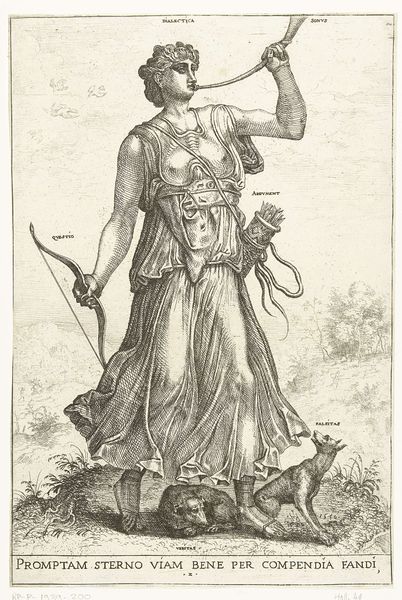
Mand, profil mod venstre, med kårde og fjerprydet hat, på vej op ad to trappetrin 1594 - 1678
0:00
0:00
print, engraving
#
portrait
#
baroque
# print
#
landscape
#
figuration
#
line
#
engraving
Dimensions: 140 mm (height) x 90 mm (width) (bladmaal)
Curator: This intriguing engraving, dating roughly from 1594 to 1678, is titled "Man, Profile to the Left, with Sword and Feathered Hat, Ascending Two Steps," and it’s attributed to Salomon Savery. Editor: My first thought is, what a flamboyant character! The exaggerated feathers and stance almost feel performative, like he’s on a stage rather than simply climbing some stairs. Curator: Indeed, there is a theatrical air. The costume, a cape with meticulous lines, a feathered hat, evokes a sense of the Baroque period's interest in portraying status and opulence. Note how the figure is set against a sweeping landscape. The landscape places the figure in a social hierarchy, with suggestions of power and status over land. Editor: You can certainly see the hallmarks of power woven into the imagery, particularly through that plumed hat, practically a character in itself. I wonder what cultural assumptions the intended audience brought to it? Curator: Hats, especially plumed ones, often symbolized authority, nobility, and, of course, wealth. They visually amplified the wearer’s presence, commanding attention. But notice that the cape nearly hides the person entirely—it seems to conceal as much as it reveals. This might also speak to a period of political maneuvering and masking intent. Editor: I see your point about concealment. It does provoke questions about identity and perhaps even anxieties of the time. Also, it strikes me that these prints often functioned within specific social circles, circulating images and ideas among elites, establishing common symbols and even power structures. Curator: Precisely. Engravings such as these weren't just decorative objects; they played a part in solidifying cultural and class boundaries. They allowed for the wider dissemination of a very controlled and particular worldview, in some cases a set of archetypes, or familiar figures, such as the confident courtier that Savery represents here. Editor: Thinking about it now, the choice to render him ascending steps becomes quite symbolic, suggesting social climbing in a literal, visualized way. The ambiguity of what he's stepping toward makes the symbolism even more powerful. It’s a very loaded image when you dissect it. Curator: Yes, it's fascinating how a seemingly simple portrait reveals such complex layers of social and political meaning when you start to explore its symbolic vocabulary. Editor: Absolutely. It also challenges us to consider our contemporary lens, asking how much has changed—or hasn't—in how we interpret visual symbols of power.
Comments
No comments
Be the first to comment and join the conversation on the ultimate creative platform.
